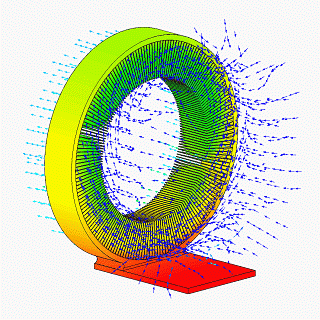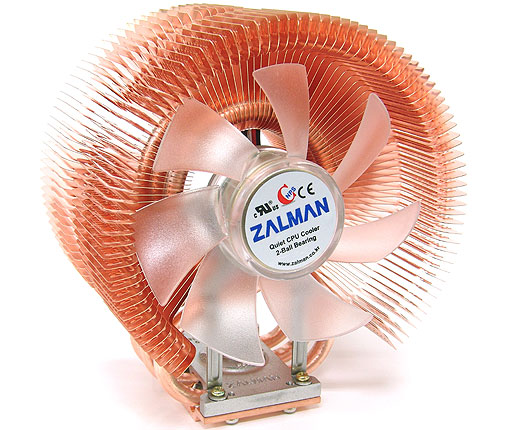Hi. I am a long time lurker of hardocp, but this is my first post here.
I come here, because I had this idea pop into my head and have wondered why I have never seen such a thing.
I know there have been similar designs in the past, like Zalman's flower tower, CNPS-9500, designs, but this design I have is drastically different.
Here is the basic premise behind the design that popped into my head.

It is more or less what you expect from tower heatsinks these days, with heatpipes connecting from the base plate to the fins, but what I have tried differently is in how the fins are laid out.
I call it the 'XO' design.
If anyone still uses those older wire chrome plated fan grills, you might notice the resemblance in low impedance design.
Pros.
- Traditional axial fans used on tower heatsinks have dead spots at the corners and behind the hub. This design accounts for the deadspots by not having anything there.
- Axial fans have varying static pressure and air flow at different radius points of the fan. This design accounts for that by varying fin spacing.
- Unlike traditional towers, the heatpipes protrude at an angle, allowing overall height to be reduced
- The fins are already shaped in a shroud, so the airflow is forced to go over the fins and should have more optimal airflow throughout the fins
- Less materials used, which should lower the total weight of the HSF
Cons.
- This design is far more complex than traditional towers and would require more welding. I would expect 4 parts per fin and many layers
- The heatsink will likely only be optimal with the fan it was designed with and 3rd party fans could have poorer performance
- Less total fin surface area (square vs. circle, or something to that tune)
- No fan overhang to provide cooling around the socket
Unknowns.
- Is "less surface area, but optimal air flow" better or worse than "more surface area, but imperfect airflow"?
- Is it the center of the fan that has poor static pressure or is it the outer edges?
- Are the fin spacing difference at various intervals really that important?
- What sort of turbulence / noise differences are there from traditional towers?
I have read on hardocp that there was a program that could virtually model how well a heatsink design works, but that is beyond my technical capabilities.
Basically, what I want to know is, how well does this type of design work for heatsinks.
I come here, because I had this idea pop into my head and have wondered why I have never seen such a thing.
I know there have been similar designs in the past, like Zalman's flower tower, CNPS-9500, designs, but this design I have is drastically different.
Here is the basic premise behind the design that popped into my head.

It is more or less what you expect from tower heatsinks these days, with heatpipes connecting from the base plate to the fins, but what I have tried differently is in how the fins are laid out.
I call it the 'XO' design.
If anyone still uses those older wire chrome plated fan grills, you might notice the resemblance in low impedance design.
Pros.
- Traditional axial fans used on tower heatsinks have dead spots at the corners and behind the hub. This design accounts for the deadspots by not having anything there.
- Axial fans have varying static pressure and air flow at different radius points of the fan. This design accounts for that by varying fin spacing.
- Unlike traditional towers, the heatpipes protrude at an angle, allowing overall height to be reduced
- The fins are already shaped in a shroud, so the airflow is forced to go over the fins and should have more optimal airflow throughout the fins
- Less materials used, which should lower the total weight of the HSF
Cons.
- This design is far more complex than traditional towers and would require more welding. I would expect 4 parts per fin and many layers
- The heatsink will likely only be optimal with the fan it was designed with and 3rd party fans could have poorer performance
- Less total fin surface area (square vs. circle, or something to that tune)
- No fan overhang to provide cooling around the socket
Unknowns.
- Is "less surface area, but optimal air flow" better or worse than "more surface area, but imperfect airflow"?
- Is it the center of the fan that has poor static pressure or is it the outer edges?
- Are the fin spacing difference at various intervals really that important?
- What sort of turbulence / noise differences are there from traditional towers?
I have read on hardocp that there was a program that could virtually model how well a heatsink design works, but that is beyond my technical capabilities.
Basically, what I want to know is, how well does this type of design work for heatsinks.
![[H]ard|Forum](/styles/hardforum/xenforo/logo_dark.png)


